Last updated on June 4th, 2025 at 01:04 pm
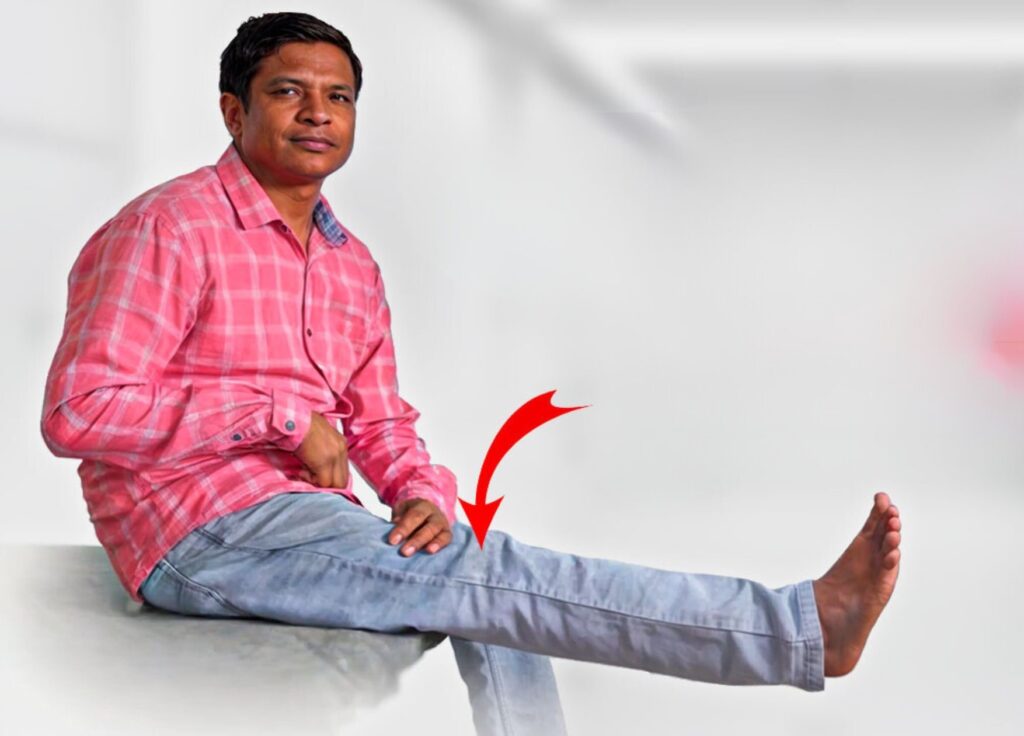
Many of you who are reading this may be recovering from hemiplegia caused by a brain stroke. In this article, we will discuss some important leg exercises you can do by sitting on a chair, which will significantly improve your walking 1.
Before we move to the next exercise, let me tell you that it’s possible you may not be able to do some exercises. It depends on your capabilities and the stage of your paralysis.
You should still try the exercises that you can’t seem to do. It’s not necessary to do them perfectly at first, but gradually aim for perfection.
- 1) How to do the Seated Marching Exercise for a Paralyzed Leg?
- 2) What is the Heel Slide Exercise and How Does It Improve Walking in Hemiplegia?
- 3) How to Perform the Ankle Pump Exercise for Hemiplegia?
- 4) How to Do the Seated Leg Raise Exercise for Paralysis Patients?
- 5) What is the Knee Extension Exercise and How Does It Help Improve Walking?
- 6) How to Do the Seated Hip Abduction Exercise to Strengthen Legs in Paralysis?
- 7) What Exercises Can Help with Foot Drop in Hemiplegia?
- Conclusion
1) How to do the Seated Marching Exercise for a Paralyzed Leg?
Seated marching exercise is crucial for hemiplegic patients because it helps improve lower limb strength and coordination. It strengthens the leg muscles and promotes coordination between both legs.
By lifting the legs in a marching motion while seated, hemiplegic patients can work on regaining motor control and muscle strength in the affected limb.
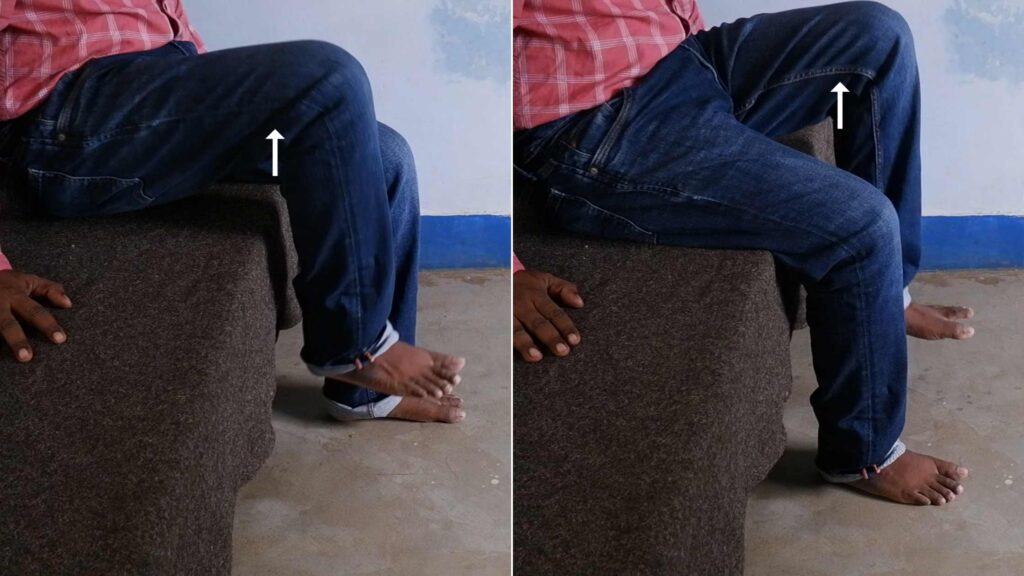
For this exercise:
- Sit on a sturdy chair with a straight back and feet flat on the floor.
- Lift your right foot off the floor, bringing your knee towards your chest.
- Slowly lower your right foot back to the floor.
- Lift your left foot off the floor, bringing your knee towards your chest.
- Slowly lower your left foot back to the floor.
- Continue alternating between lifting your right and left legs in a marching motion.
- Aim to keep a consistent rhythm and maintain good posture throughout the exercise.
Beyond this, tools like a mini pedal exerciser can help in low-impact way to keep your legs (and even arms) moving daily from the comfort of your chair.
- 1. Leg and Arm Exercise Bike–This mini exercise bike is used for legs and arms cycling exercise at home or office.
- 2. Portable Exercise Bike-This exercise bike is aoubt 9.5 pounds weight, easy to move , and a perfect portable exercicsc…
- 3. Tension Adjustable Bike -Rotate the knob to adjust the pedal tension,you can customize your exercise intensity. It of…

2) What is the Heel Slide Exercise and How Does It Improve Walking in Hemiplegia?
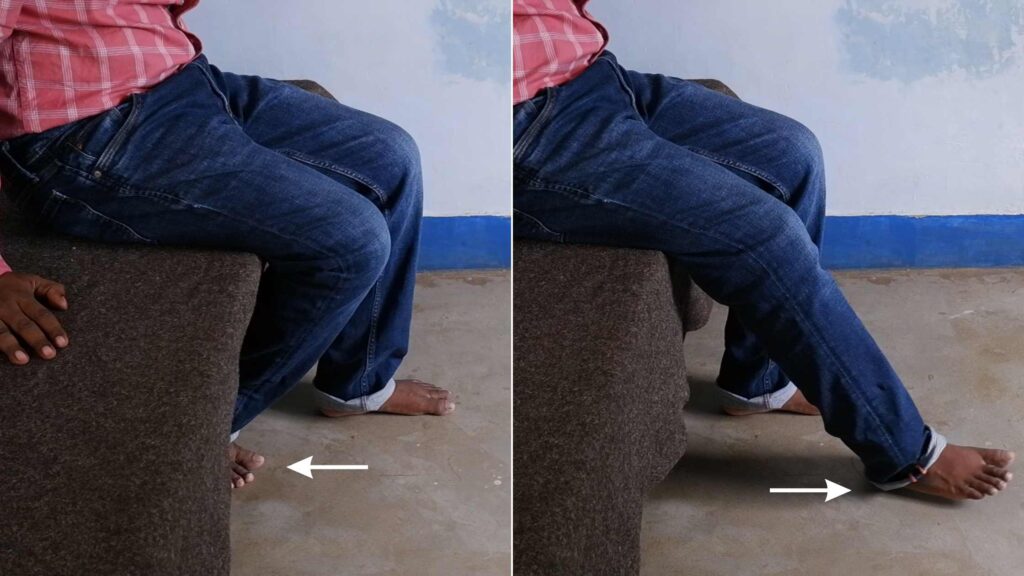
The heel slide exercise involves sliding the heel of the affected leg toward the buttocks while sitting. This movement helps improve the knee bending motion and can help straighten your leg over time.
It also helps to stretch and engage the leg muscles, promoting increased mobility and functionality.
Regular practice of the heel slide exercise can enhance walking ability and overall independence for individuals with hemiplegia.
- Start by lying on your back with both legs extended.
- Bend one knee and slide your heel along the surface toward your buttocks as far as comfortable.
- Hold the position for a few seconds, feeling a gentle stretch in the front of your thigh and knee.
- Slowly straighten your leg back to the starting position.
- Repeat the movement with the other leg.
- Perform the exercise according to your comfort and capability, gradually increasing the range of motion as you feel more comfortable.
3) How to Perform the Ankle Pump Exercise for Hemiplegia?
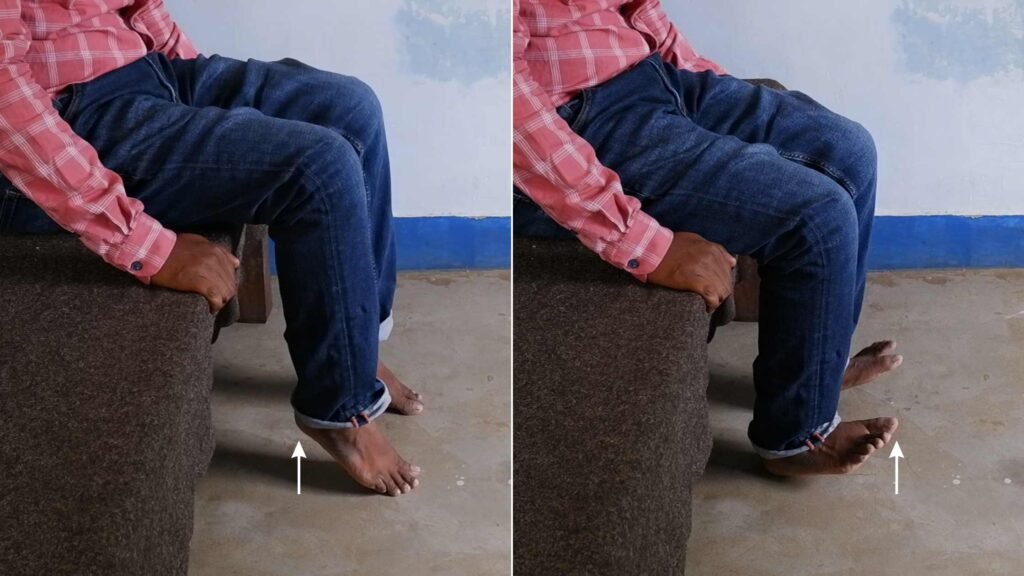
The ankle pump exercises involve moving the ankle up and down to help improve circulation and prevent blood clots in the legs.
Performing ankle pump exercises can also help maintain joint flexibility and prevent muscle contractures, which are common issues for individuals with hemiplegia.
- Sit or lie down in a comfortable position.
- Lift your ankles off the ground, bringing your toes towards your body.
- Hold this position for a couple of seconds.
- Lower your toes back down and lift your ankles.
- Repeat this motion as much as possible, aiming for a smooth, continuous movement.
- It’s more about the motion than the quantity, so no need to count. Just focus on the movement and aim for improvement over time.
4) How to Do the Seated Leg Raise Exercise for Paralysis Patients?
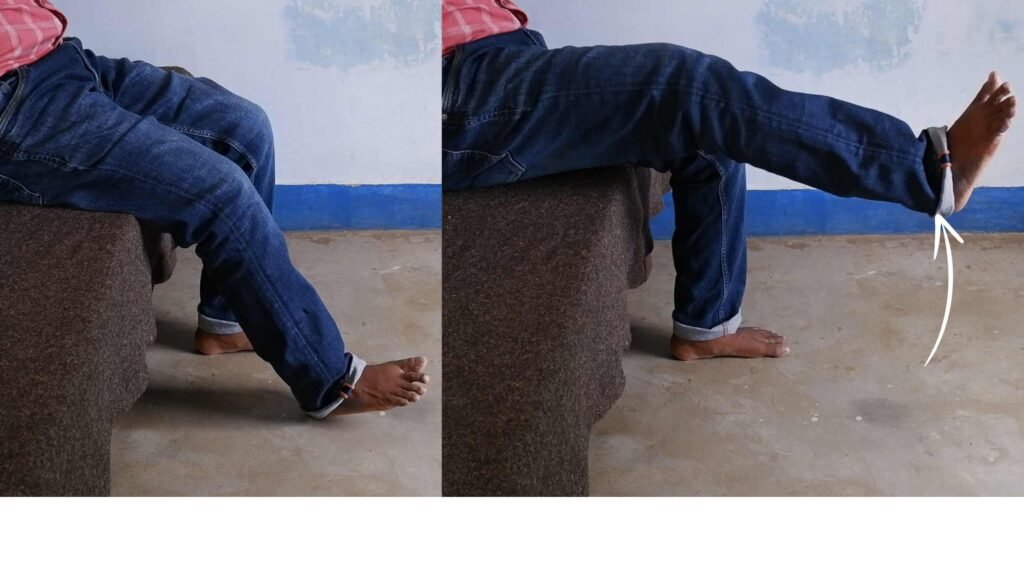
The Seated Leg Raise is a type of resistance exercise designed to strengthen your quadriceps muscles, which are crucial for regaining control and improving your walking pattern after paralysis 2.
- Sit on a chair with your back straight and feet flat on the floor.
- Straighten one leg out before you, keeping your knee straight and your foot flexed.
- Engage your quadriceps (the muscles at the front of your thigh) and try to lift your leg off the ground while keeping it straight.
- Hold the lifted position for a few seconds, then slowly lower your leg.
- Repeat the lifting motion 10-15 times on each leg.
- Remember to breathe steadily and maintain good posture throughout the exercise.
Progression Tip: As your strength increases, you can add light resistance. Consider using adjustable ankle weights or placing a resistance loop band around your ankles to make the movement more challenging.
Always start with the lightest resistance and focus on control over weight.
- Pair – All sizes come in pair. Ideal for home workouts, walking, jogging, core training, Cross Training, aerobics, gym a…
- Durability – Weights are made of neoprene exterior, reinforced stitching and moisture absorbing material inside, soft, b…
- Adjustable – With oversized velcro pad, the weights are super easy to put on and off. Full adjustable to fit ankle, wris…

- Durable: Thick fabric material made from Polyester/Latex Rubber with sewn-in reinforced joints. Great for strength train…
- Comfortable: Non-Slip rubber grips to keep the bands from slipping or rolling up. Can be used over clothes or on bare sk…
- 4 Resistance Levels: Color coded and labeled with the corresponding resistance levels to suite your strength. For beginn…

5) What is the Knee Extension Exercise and How Does It Help Improve Walking?

Knee extension exercises target the quadriceps muscles in the front of the thigh, which are essential for leg strength and stability. This exercises make use of weight of the leg as resistance to gain strength 2.
As you progress, you can add weight cuff tied at ankle level to increase the resistance.
This can help prevent muscle contractures and maintain or increase the range of motion in the knee joint. This is important for preventing stiffness and promoting better overall leg function.
- First, sit on a chair with your back straight and your feet flat on the floor.
- Then, slowly extend your right leg out in front of you, keeping your knee straight.
- Hold the extended position for a few seconds, then slowly lower your leg back down.
- Repeat this movement at least 10 times for each leg, aiming for 3 sets.
- Remember to keep a steady and controlled motion throughout the exercise, and be mindful of any discomfort or strain.
Also Read: Kegel Exercises for Men to Regain Bladder Control Urine Leakage
6) How to Do the Seated Hip Abduction Exercise to Strengthen Legs in Paralysis?
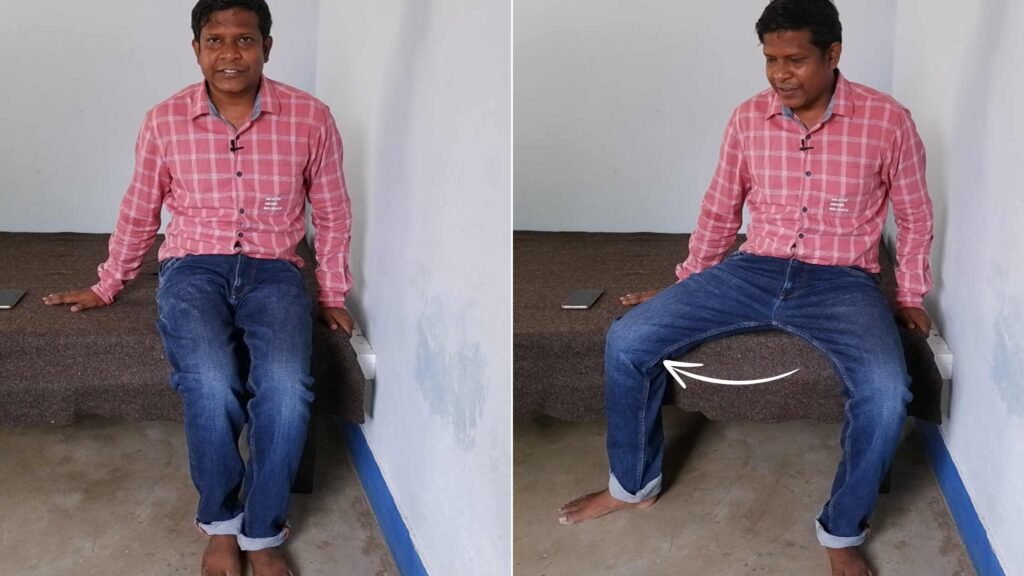
Seated hip abduction exercises are especially important for hemiplegia patients because they can help improve hip strength, stability, and mobility on the affected side of the body.
These exercises can target the hip muscles, including the hip abductors, which are crucial for walking, balance, and overall lower body function.
- Sit on a chair with your back straight and feet flat on the floor.
- Slide your hips slightly to the front of the chair to create space for movement.
- Keep your back straight, and slide one hip outward to the side as far as is comfortable.
- Slowly bring the hip back to the starting position.
- Repeat the movement on one side for the desired number of repetitions.
- If you have weakness in both legs, you can perform the exercise on both sides.
- If you have hemiplegia and one side of your body is affected by paralysis, focus on the affected side and repeat the exercise on the unaffected side.
7) What Exercises Can Help with Foot Drop in Hemiplegia?

Foot drop is the common and very concerning issue of hemiplegia, significantly impacting the ability to walk properly.
It is essential to manage foot drop. In one of my articles, “3 Easy Foot Drop Exercises, Guide to Electrical Stimulation,” I covered other exercises regarding electrical stimulation for foot drop. Here, let me cover an exercise that you can do in sitting.
- Sit comfortably in a chair with your back straight and your feet flat on the floor.
- Lift one foot off the floor and hold it with your hand, supporting the heel with your fingers.
- Gently flex your ankle and toes upward, as far as you comfortably can, using your hand to assist the movement if necessary.
- Hold the flexed position for a few seconds, then release and lower your foot back to the starting position.
- Repeat this movement for 10-15 repetitions on each foot.
- Once you are comfortable using your hand for assistance, try performing the same movement without using your hand to support the foot.
- If you have difficulty moving your foot without assistance, you can use your other hand to help guide the movement.
- Aim to do this exercise as often as possible to help improve strength and mobility in your foot and ankle.
Conclusion
These were some exercises to improve your walking pattern if you have started walking a little. If you haven’t started walking, do these exercises seriously, and you’ll see the benefits 1.
While focusing on muscle strength and movement control is important, we should also address sensory deficits. Many hemiplegics experience changes in sensation in the affected leg, which can impact balance and coordination, further affecting walking.
Sensory retraining focuses on re-educating the brain to interpret sensations from the affected limb. This helps to improve awareness and overall leg function. It involve specific tactile and proprioceptive exercises, which complement the motor exercises discussed here, contributing to a more comprehensive recovery 3.
Keep Reading: Hemiplegia can regain hand movement by artificial neural connection
The author is a physiotherapist who has been practising for the last 17 years. He holds a Bachelor's in Physiotherapy (BPT) from SVNIRTAR (Swami Vivekananda National Institute of Rehabilitation and Research), one of the prestigious physiotherapy schools in India.
Whatever he learns dealing with his patient, he shares it with the world through blogs and e-books. He also owns a YouTube channel, "Sunit Physiotherapist" with over 8 lakh active subscribers. Here, he shares everything he gets to learn serving the patient.








